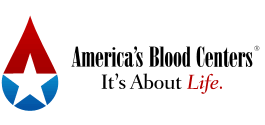Innovation Over Faster Horses and Great White Whales
Economic pressures within the healthcare industry and, specifically the blood enterprise, have exposed a red ocean of competition replete with sharks attacking for the lowest price, mercenaries invading territories to acquire new market share, and a landscape ringed by beachheads strategically positioned to stave off conquest for a shrinking transaction base. Mergers and acquisitions in the supply chain and customer base have yielded market consolidation and blood has become commoditized as hospital administrators squeeze every cent from the supply chain. Long gone is the laissez-faire magnanimity, once the hallmark of the blood banker, replaced instead by fierce competition for the lowest possible price with the fervor of Captain Ahab's quest for the Moby Dick.
Given the competitive blood banking landscape, we need innovation now more than ever to explore blue oceans of uncontested market space.Blue Ocean Strategy, a strategy developed and described in a book by W. Chan Kim and Renée Mauborgne, align innovation with utility, price, and cost positions to reveal new potential within existing markets or entirely novel spaces, making competition irrelevant. A classic example of a blue ocean strategy was articulated by Henry Ford, "If I had asked people what they wanted, they would have said faster horses." Mr. Ford instead transformed customer needs to an outcome-driven innovation that forever changed the face of transportation.
Innovation is the cornerstone of today's successful companies. Think of Keurig K-cups, Tide detergent packets (Pods), Apple Music, or Waze connecting opportunities with valued product features. Keurig and Tide transformed an existing product to an underserved outcome of convenience. Apple Music and Waze offered a membership loyalty model and a personalized experience that captures and rewards consumer engagement while recouping member behavior data for future product development.
What innovative opportunities exist in blood banking? Even in our highly regulated industry, market boundaries and industry practices are not considered limitations, hence, the disruptive influence of pathogen reduction or the label expansion of microbial detection platforms enabling extended platelet shelf life. These are game changers generating value in the marketplace that challenges conventional thinking about pricing, reimbursement, and inventory management. Liquid plasma offers rapid delivery for emergencies by eliminating time to thaw the product, which would potentially be wasted if it cannot be used. Innovation for the blood donor includes value delivery through membership loyalty in an elite cadre of health-seekers, rewarding repeat behavior thus driving down acquisition costs.
Innovation requires a mental shift from the traditional paradigm of a blood center with a static menu of services to that of a multi-channel delivery system offering convenience, membership, and constant realization of value. As blood bankers, we have always recognized the importance of the life-saving gifts from blood donors. Going forward, innovation will be imperative to optimizing value offerings in the blue ocean lest we fascinate on faster horses or fixate on a great white whale in red waters.
Linda Barnes, Chief Operating Officer & Chief Information Officer, Bloodworks Northwest; [email protected]
Posted: 08/28/2015 | By: Linda Barnes, Chief Operating Officer & Chief Information Officer, Bloodworks Northwest | Permalink
< Back to list






